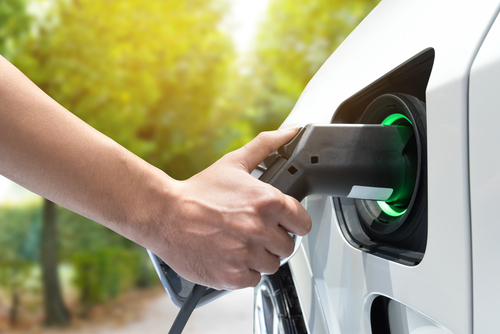EV sales seen rising through 2040, but accommodating them needs careful coordination, experts say

While electric vehicles will likely represent 35 percent of all new car sales by 2040, accommodating those new cars will mean coordinating diverse teams to install charging stations for light, medium and heavy-duty vehicles, energy and utility EV program experts said.
During a Transportation Electrification webinar hosted by West Monroe Partners this week, experts said stakeholders from city and county governments to utility companies need to work together and be flexible when it comes to ensuring a smooth transition to accommodating more electric vehicles in their municipalities.
Advances in transportation electrification (TE) will present utility companies with new opportunities to provide customers with value-added services, said Andrew Dillon, senior principal for energy and utilities practice for West Monroe.
But in order to manage that, utilities and government agencies, as well as other stakeholders, need to work together on regulations and policy decisions to ensure cities and counties are meeting their targets and providing the charging stations and infrastructure needs their customers will demand in the future.
“A successful TE program will ensure cross-departmental collaboration with integrated workflow technology solutions,” he said.
Dillon also recommended that stakeholders measure value from the electrification process so that data would be available and documented if needed in the future for program expansions.
As the cost of ownership decreases, access to infrastructure will increase, precipitating grid modernization and careful monitoring of usage times, said Carolyn Weiner, manager of electric vehicle programs at PG&E. The company is addressing the issue through an aggressive rollout approach that would provide charging stations in multi-unit buildings, as well as for medium- and heavy-duty vehicles. The company, she said, is working toward not only increasing the availability of charging stations, but also increasing awareness of what is available to consumers.
Lisa Arellanes, senior manager of Business Development & Partnerships, Transportation Electrification, at Southern California Edison, said her company is not only focusing on installing additional charging stations, but also working with municipalities to provide charging stations and address the infrastructure needs of public transit and school buses. The company anticipates installing more than 50,000 ports of various types over the next four years.
Ensuring that a transportation electrification program is successful, said Arellanes, depends on being flexible.
“Bringing people together means being comfortable with being flexible and dynamic,” she said. “Flexibility is key. Having your program agreements and processes in a tariff means you’re locked in. If you need to change requirements or building code requirements after your filing, you’re stuck.”
Tom Hulsebosch, senior managing director of the Energy & Utilities practice at West Monroe, said experts predict that more than 100 million electric cars will be on the road by 2018. As the industry range standard (how far a car can go without a charge) increases to beyond 200 miles, consumers are becoming more comfortable with buying electric vehicles.
“Range anxiety is a real thing,” Hulsebosch said. “But we passed 1 million electric vehicles in 2018. Electric car sales are up by 81 percent. It’s estimated that electric vehicle sales will equal 35 percent of all new car sales by 2040, and we’re seeing all classes of electric vehicles hitting the market.”
